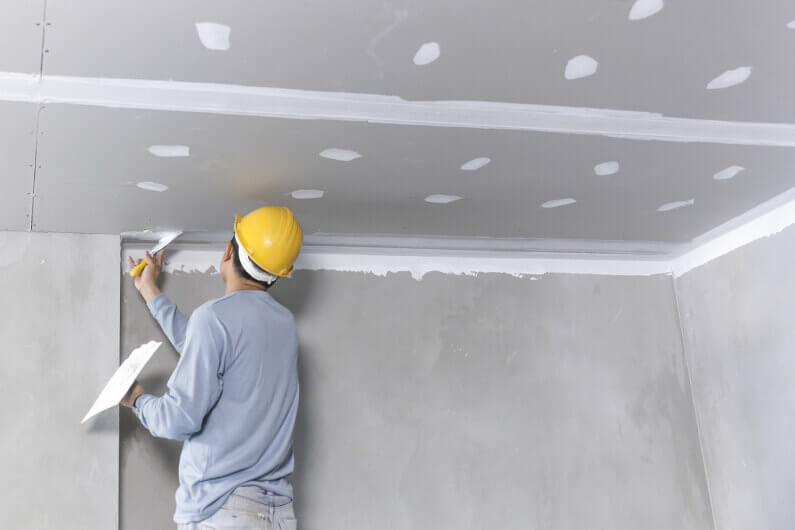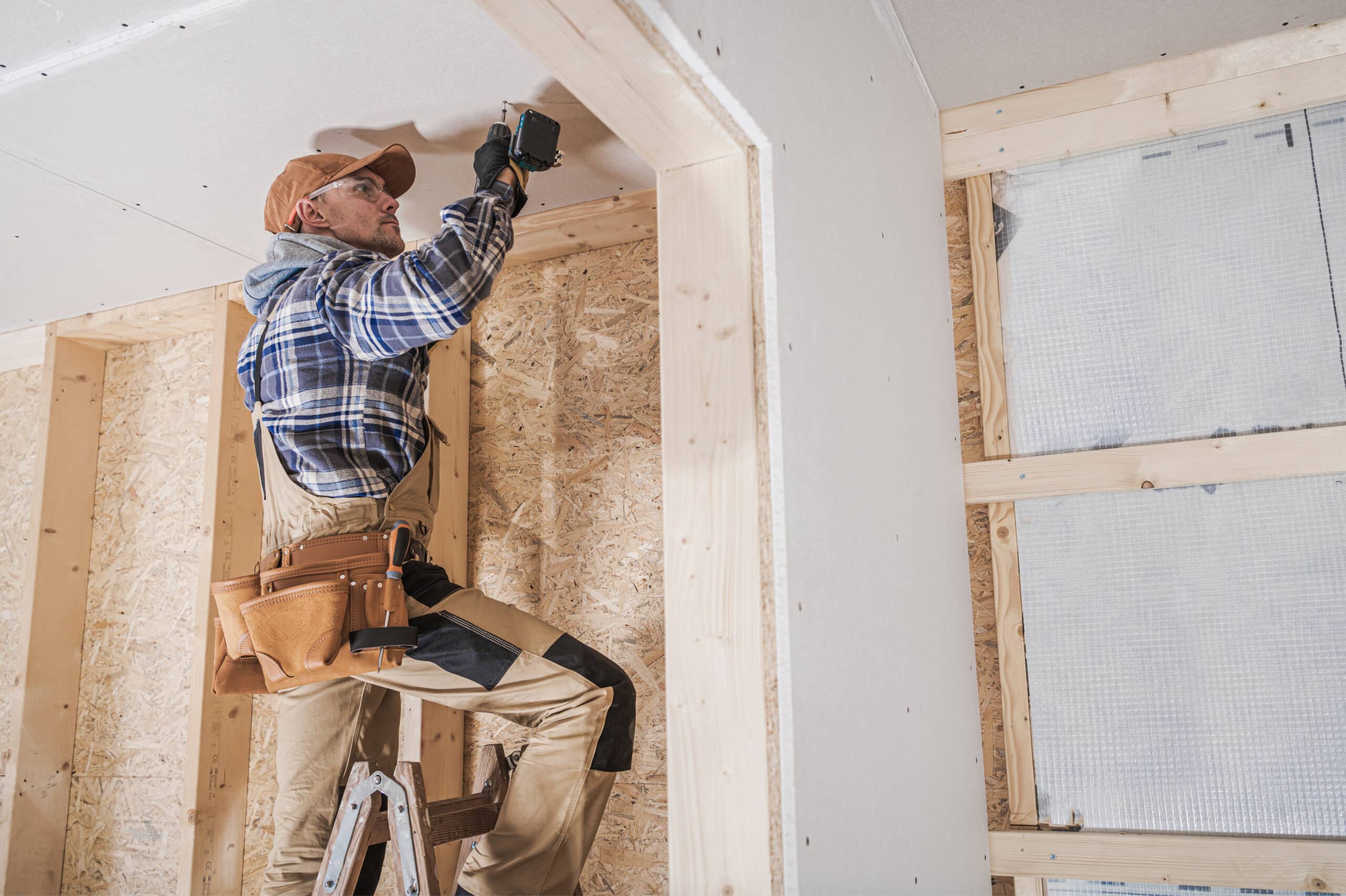Trusted Drywall Fort Worth Specialists for Seamless Results
Wiki Article
Drywall Setup Facilitated: Tips for Perfect Outcomes
Drywall installation is often viewed as an overwhelming task, yet with the ideal approach and understanding, it can become a workable endeavor. Selecting high quality materials and preparing the installation location are critical primary steps that establish the structure for success. Furthermore, understanding techniques for cutting, hanging, and ending up drywall can considerably influence the outcome. As we check out these necessary suggestions, you might discover that even the tiniest adjustments in your technique can bring about extremely boosted outcomes, leaving you to consider exactly how these methods can change your following project.Picking the Right Materials
Selecting the suitable products for drywall setup is critical to achieving a long lasting and cosmetically pleasing finish. drywall fort worth. The key component, drywall sheets, generally come in various thicknesses, with 1/2-inch sheets being conventional for indoor wall surfaces. For areas calling for additional wetness resistance, such as cooking areas or washrooms, consider using eco-friendly board or cement board, which are specially designed to endure humidity
Furthermore, choosing the ideal bolts-- either nails or screws-- is important for securing the drywall to the framework. Drywall screws are usually favored for their holding power and minimized risk of standing out. Consider the finishing touches such as primer and paint, which not just improve the appearance but also shield the drywall from dampness and wear.
Preparing the Installment Location
Prior to starting the drywall installation process, it is necessary to prepare the installment area extensively. This prep work entails a number of vital steps to make certain a smooth and effective task. Initially, clear the location of any type of furniture, home appliances, or blockages that could hinder accessibility. A clean office decreases the threat of damage to existing items and enables efficient movement during setup.Next, examine the wall surfaces and ceiling for any flaws, such as cracks, holes, or mold and mildew. Address these problems ahead of time; patch any type of problems and enable adequate time for repair services to dry. In addition, guarantee that electrical outlets, switches, and pipes are properly placed and made up, as this will certainly influence drywall positioning.
Take into consideration the ecological problems too. A secure temperature and humidity level are vital for optimum attachment and performance of the drywall materials. If needed, utilize a dehumidifier or heater to develop ideal conditions.
Trimming and Hanging Drywall
The trick to effective drywall setup exists in the accurate cutting and dangling of the panels. Begin by measuring the room properly, thinking about any type of obstructions such as electrical outlets or home windows. Use a straight edge and an utility knife to rack up the drywall along your dimensions, then break it along the racked up line for a tidy break. For even more complex cuts, such as around outlets, a drywall saw can be utilized for accuracy.
Always function from the top down and entrusted to right, guaranteeing that you preserve a staggered pattern to improve security. Properly hanging the drywall sets the structure for a smooth finish, inevitably leading to superior cause your drywall job.
Insulation and Mudding Strategies
While correct cutting and hanging of drywall sets the stage, the next crucial step includes understanding taping and mudding techniques to guarantee a seamless finish. check it out Insulation is crucial for strengthening joints and avoiding cracks; it involves installing tape right into the applied joint substance (mud) Beginning with a top quality fiberglass or paper tape, applying the tape over the joint and pushing it right into the damp mud making use of a taping knife, making certain no air bubbles remain.Once the tape remains in area, use a slim layer of joint compound over the tape, feathering the sides to produce a smooth shift to the drywall surface area. Enable this layer to dry totally prior to sanding it lightly to remove imperfections. Repeat this procedure, applying additional coats of mud as required-- typically 2 to 3 layers-- while slowly widening the application area with each layer to accomplish a seamless appearance.
After the final coat dries, sand the surface with a fine-grit sandpaper up until smooth. drywall repair. Bear in mind to wear a mask throughout fining sand to stay clear of inhaling dirt particles. Understanding these taping and mudding methods is vital for attaining a professional-quality coating in your drywall setup
Completing Touches for Excellence
Attaining a remarkable drywall installment exceeds taping and mudding; it culminates in the completing touches that elevate the look these up total appearance. These last actions are critical in making certain a professional-grade surface that boosts the aesthetic appeals of your area.Begin by fining sand the dried out joint compound to produce a smooth surface. Use a fine-grit sandpaper use this link and a sanding block or pole sander for optimal control. Pay particular interest to edges and sides, as these locations often tend to need even more precise work. After fining sand, clean down the walls with a damp towel to remove any type of dust fragments, guaranteeing a clean surface area for painting.
Next, use a guide particularly designed for drywall. This step is necessary, as it aids seal the joint compound and provides an uniform base for the overcoat. Once the primer dries, evaluate for any type of imperfections, and retouch as needed.
Final Thought
To conclude, successful drywall installation hinges on the cautious option of materials, complete preparation of the installment area, and precise execution of reducing and hanging methods. Proficiency of taping and mudding processes is vital for attaining a smooth coating. Furthermore, attention to finishing touches, consisting of priming and touch-ups, makes sure a professional-grade outcome. By adhering to these guidelines, the top quality of craftsmanship can be substantially enhanced, contributing to the general visual and functionality of the area.Drywall installation is commonly perceived as an overwhelming job, yet with the appropriate approach and understanding, it can become a convenient venture.Selecting the proper products for drywall installation is critical to accomplishing a durable and aesthetically pleasing surface.Before beginning the drywall installation procedure, it is vital to prepare the setup location thoroughly. Understanding these taping and mudding methods is crucial for attaining a professional-quality finish in your drywall installation.
In final thought, effective drywall setup pivots on the mindful option of products, detailed prep work of the installment area, and accurate execution of cutting and hanging techniques.
Report this wiki page